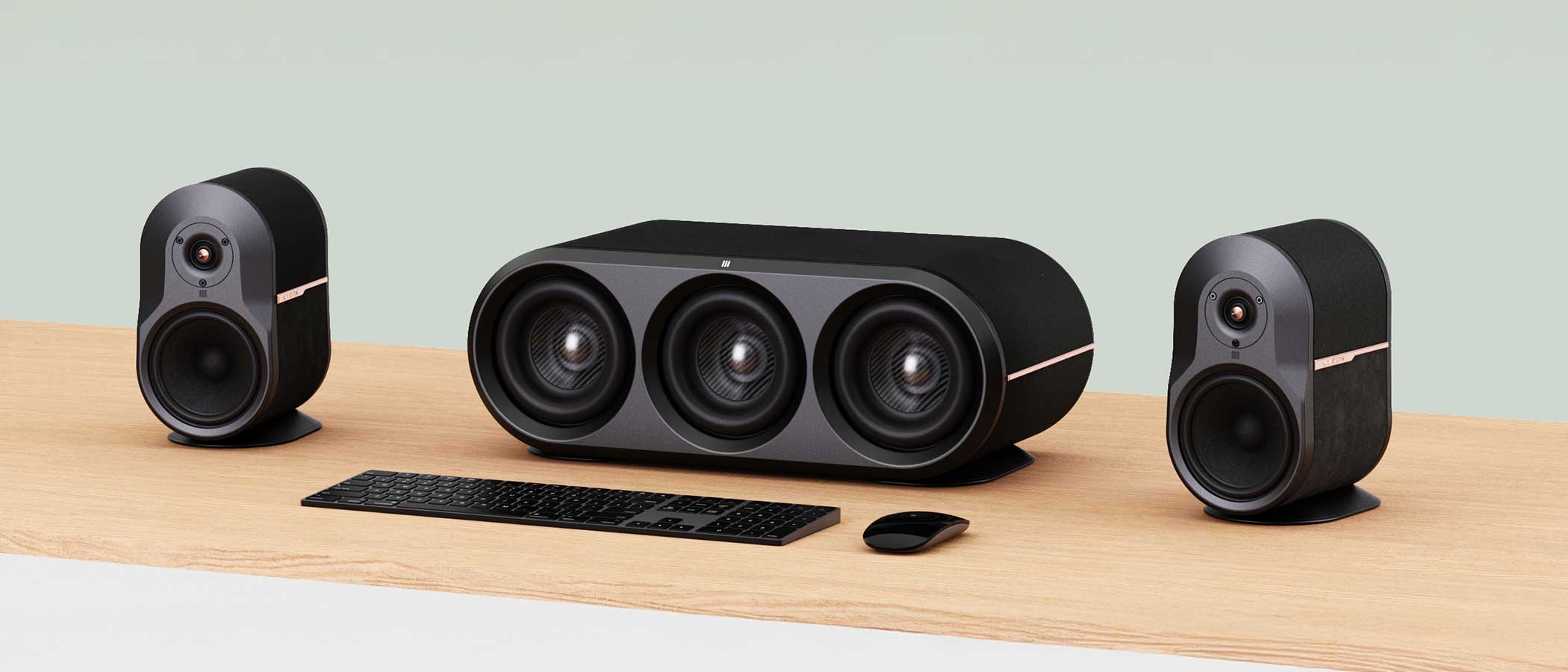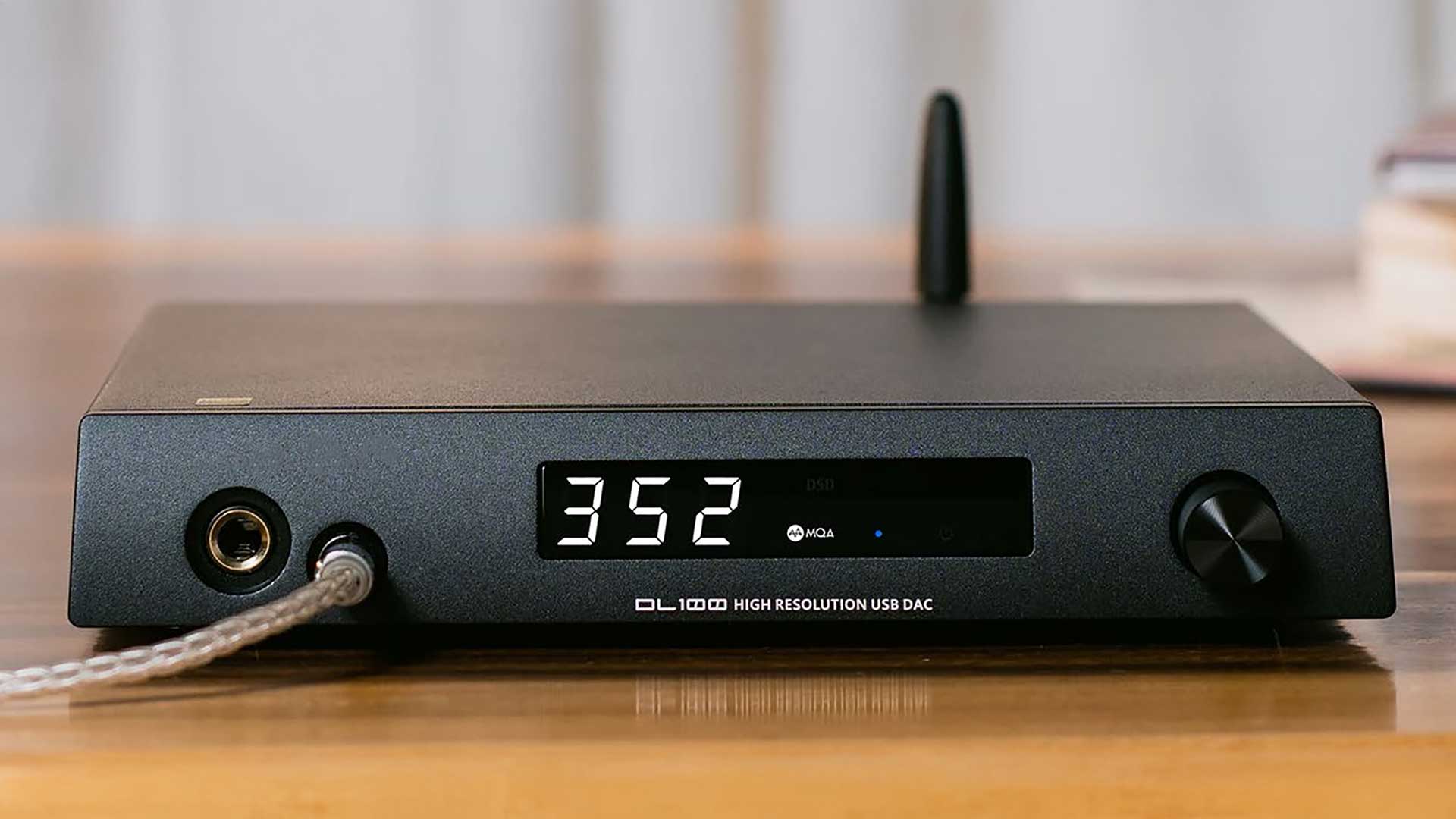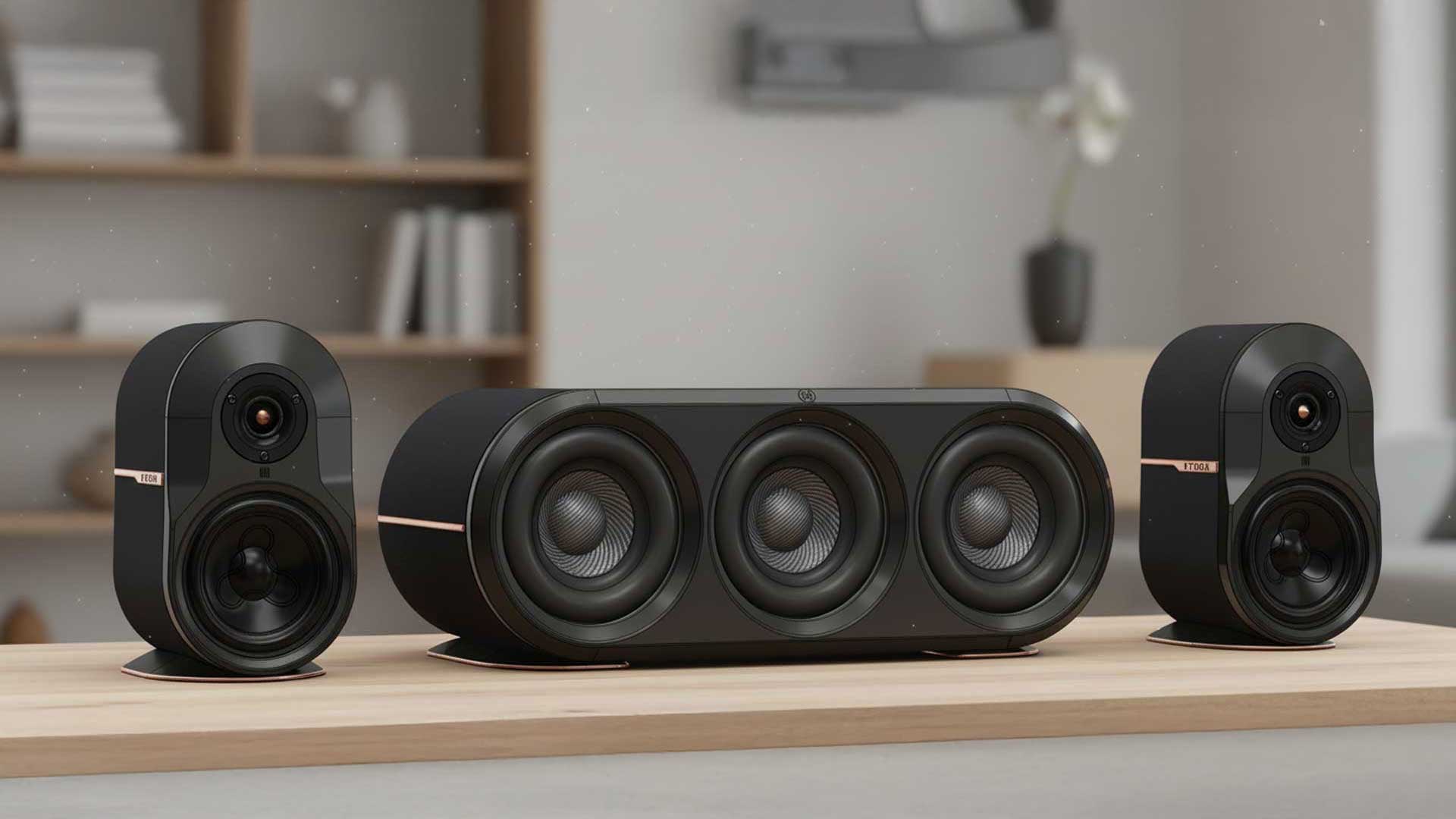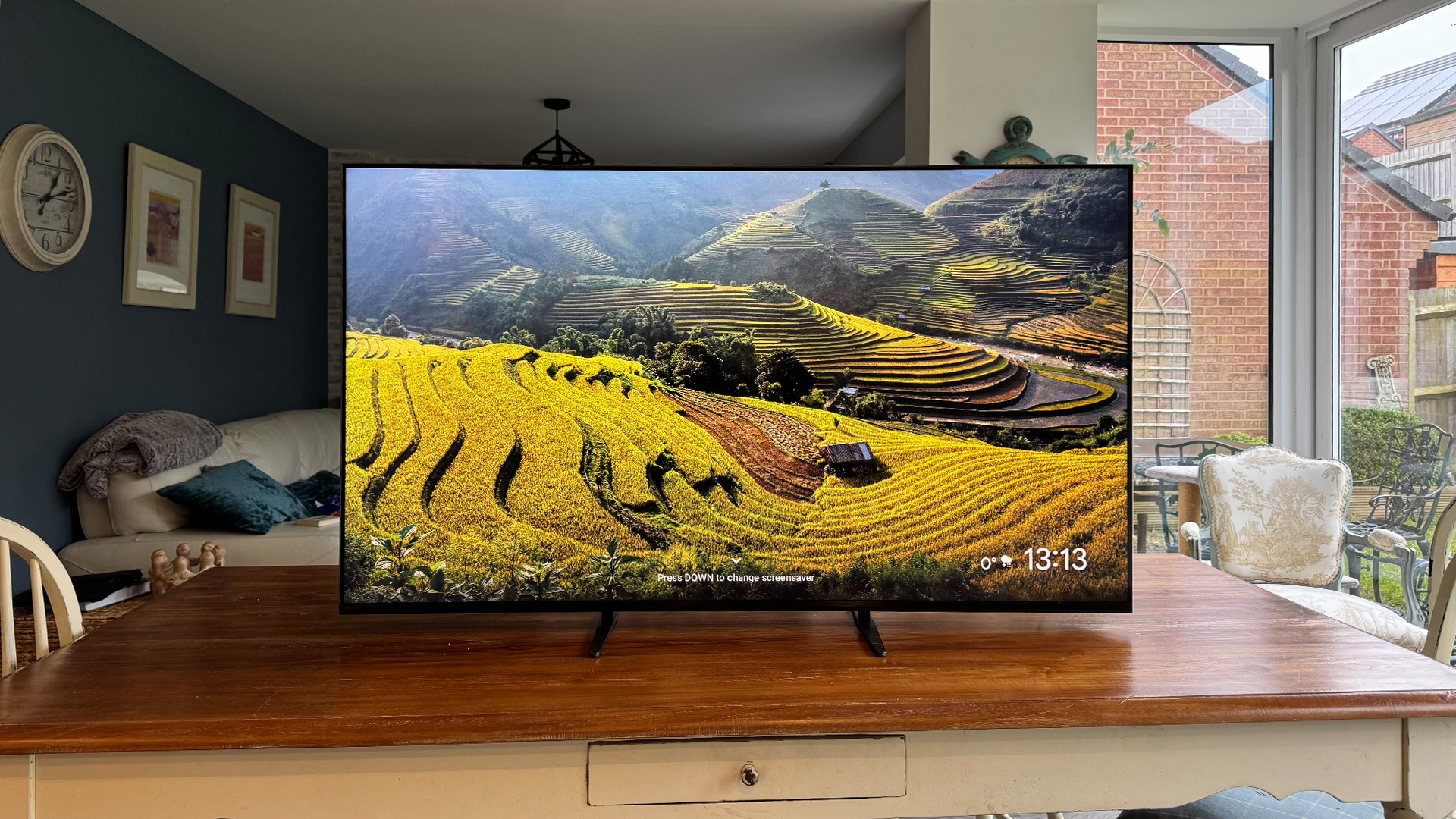Kyron Audio shrinks its reference speakers to desktop Palleon system
South Australia’s Kyron is taking its ‘best-of-show’ flagship technology to a completely different level

If you have experienced Kyron’s reference-level ‘no box’ loudspeaker systems, it was most likely as a visitor to a hi-fi show, to be amazed by their sound (they are multiple ‘Best Sound in Show’ winners), and perhaps also by their pricing which, for the top-tier Gaia Evolution system, might be pushing towards A$300,000.
So it is jaw-dropping news that the South Australian company is now launching a new 2.1-channel system which is to be priced wildly more affordably, starting at around US$10,000. As a desktop, office or ‘secondary’ system, the Kyron Palleon is also rather easier to accommodate, each of its four boxes being significantly smaller than the six-foot Gaias. The Palleon comprises a pair of satellite speakers just 225mm (about 9 inches) high, together with a horizontal woofer unit some 50cm wide, and a separate external control box which acts as the system’s connectivity hub.

Even with this ‘honey-we-shrunk-the-Kyron’ approach, the company has retained its traditional open cabinet design. There are no solid walls sealing in the tweeters and midrange drivers of the Palleon’s two satellite speakers; the rear of each speaker has an open cage that deliberately removes allows the tweeter and midrange to fire both forward and backward. (The speaker rears are shown fully open in the image above, but will come with a cloth-covered grille.)
This open-baffle or dipole design, including Kyron's proprietary ‘No-Box’ midrange topology, removes the traditional damping and wave management provided by a sealed or ported cabinet, but Kyron claims this design choice helps achieve their famed acoustic neutrality.
As for drivers, the four-inch midrange features technology lifted directly from Kyron’s flagship line in a patented Symmetrical Drive (SD-3) Under-Hung motor, promising “a level of accuracy normally reserved for the finest of studio monitor speakers”, while the tweeter is a multi-patented 19mm ring-radiator design which extends the system’s frequency response up to 40kHz, while Kyron states the low frequency response of the system as descending to 45Hz.

Covering that low-end is the bass module, which is around 50cm wide, housing a single active 133mm carbon-fibre woofer supported by two tuned passive radiators.
This bass unit accepts balanced inputs from the DAC unit (see below), while also containing the power for itself and the open-backed satellites: 280W Class-D for the former, while the two satellites receive 140W each. The rear of the bass unit has a small display and knob, so there seems some level of smart control going on there; it certainly includes DSP, so there is digital resampling of the DAC output. When we queried this with Kyron, they replied: "We find the dual conversion is far less of a compromise than the 'purist' approach of using other methods of crossover and equalisation, especially in the lower frequencies. We like to think of it as double glazed glass… more convenience and still transparent."


The fourth box in the system is the separate DL100 High Resolution USB DAC, an external control unit and headphone amplifier, which also acts as the system’s connectivity hub.
Connectivity options are impressive, though digital only: USB-C, one coaxial digital, one optical S/PDIF, and a very useful HDMI ARC for playback from a TV. A Bluetooth antenna adds wireless playback with excellent codec support: SBC and AAC but also aptX, aptX HD (up to 576kbps) and LDAC (990kbps under ideal circumstances).
A high-quality headphone amplifier serves both 6.35mm and 4.4mm balanced headphone jacks on the front panel, which will help make the Palleon a complete all-in-one desktop command centre. The DL100 DAC unit is armed with quad Cirrus Logic DAC Chips allowing the USB input to support up to 32bit/768kHz PCM, and DSD256. A multi-mode DSP at 64-bit resolution handles crucial tasks like crossover management and equalisation, while the audio connections from the DSP to the internal amplifiers are made using balanced cables, though RCA unbalanced outputs are also available.

While sheer size dictates that it surely can’t deliver the utter realism of the larger Kyron systems, the company claims the Palleon does deliver “our award-winning sound quality in a flexible and stylish speaker system that can be used anywhere”, transitioning its core philosophy of "Music | Design | No Compromise" from the living room monolith to the personal audio space, and delivering an Australian compact music system to rival the world’s best.
We look forward to reviewing it once it 'ships' early in 2026. Until then, preorders will soon be possible via the Kyron Audio website, starting at US$9990 plus options.

Jez is the Editor of Sound+Image magazine, having inhabited that role since 2006, more or less a lustrum after departing his UK homeland to adopt an additional nationality under the more favourable climes and skies of Australia. Prior to his desertion he was Editor of the UK's Stuff magazine, and before that Editor of What Hi-Fi? magazine, and before that of the erstwhile Audiophile magazine and of Electronics Today International. He makes music as well as enjoying it, is alarmingly wedded to the notion that Led Zeppelin remains the highest point of rock'n'roll yet attained, though remains willing to assess modern pretenders. He lives in a modest shack on Sydney's Northern Beaches with his Canadian wife Deanna, a rescue greyhound called Jewels, and an assortment of changing wildlife under care. If you're seeking his articles by clicking this profile, you'll see far more of them by switching to the Australian version of WHF.
You must confirm your public display name before commenting
Please logout and then login again, you will then be prompted to enter your display name.
